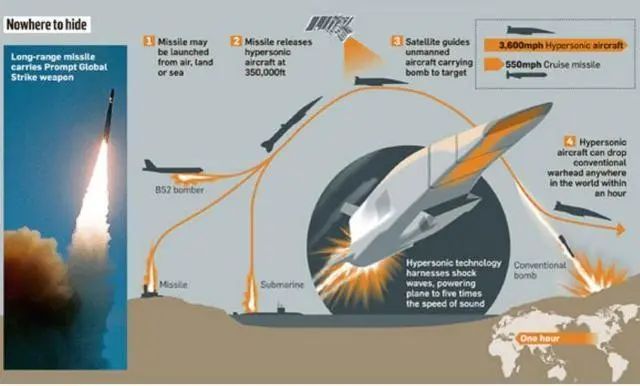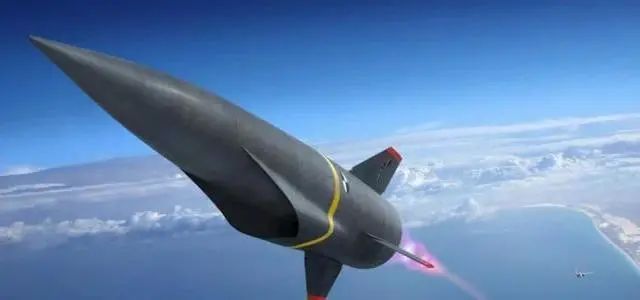According to the website of Air Force Magazine on December 22, 2020, the U.S. Department of Defense Advanced Research Projects Agency (DARPA) and the United States Air Force tested the first prototype of the inhaled hypersonic weapon concept (HAWC) last week, but the test failed due to test errors. .
According to the article, the Defense Advanced Research Projects Agency (DARPA) announced in September this year that Lockheed Martin and Thunder Technology have completed the hang-off test of their respective HAWC prototypes, and DARPA plans to test at least one HAWC prototype by the end of this year.
Sources said that the test was exactly the HAWC prototype developed by Lockheed Martin. However, due to the failure of this test, the new HAWC test will not be able to restart before the end of December.
“It’s not a design problem, it’s a stupid mistake,” said a source familiar with the project.
The article said that the U.S. Air Force and the Defense Advanced Research Projects Agency (DARPA) transferred B-52H bombers for testing and cleared the test area, but the HAWC prototype was not released from the B-52H parent bomber Sue.
The source did not disclose the specific details of the test, but he hinted that there were “most basic errors” related to the test mechanism.
At the Doolittle Leadership Center Forum online meeting on December 14, U.S. Air Force Procurement Director Will Roper said that the Air Force is expected to test another hypersonic weapon project, the AGM-183 “Air-launched Rapid Response Weapon” (ARRW), which is a special The Booster Gliding Supersonic Missile Project is carried out separately from the HAWC project.
A DARPA spokesperson said that the HAWC project is confidential and DARPA cannot provide any test information about it.
“I promise you if there is anything to celebrate, you’ll hear it,” a source familiar with the test of the project said.
Sources said that there were previous media reports that during the capture-carry flight test conducted by a HAWC prototype in May this year, it accidentally broke off the B-52H aircraft, and the missile was damaged in this test, causing the new capture-carry flight test to be delayed for several months.
The article said that before that, officials of Thunder Technologies said confidently at the 2019 Paris Air Show that their HAWC project could be tested by the end of 2019, but these predictions were obviously proved blindly optimistic.
Hypersonic weapons fly faster than Mach 5, that is, five times the speed of sound.
Because of their speed and unpredictable mobility, they are difficult to defend.

The article said that the U.S. Air Force and DARPA cooperated on the HAWC project to seek to test an inhalation missile using supercombustion ramjet technology, and explore engine design, heat resistance materials and other necessary technologies to develop large-scale production of low-cost hypersonic defense out-area missiles, which are It is small enough to launch from a fighter.
The engine used in Lockheed Martin’s HAWC prototype was built by Aerojet Rocketdyne, and Northrop Grumman provided HAWC engines for Thor.
The Nogg engine originated from the technology of buying Orbital ATK, now the Northrop Grumman engine innovation system, and is also used in NASA’s X-43 hypersonic test vehicle. NoG said that its HAWC engine was made entirely through a metal additive (3D printing) process.
The article said that DARPA said in a September press release that the flight test of the HAWC prototype will focus on engine performance and thermal management technology testing to achieve long supersonic cruises and economically affordable system design and manufacturing technology.

In November 2020, the Pentagon announced that it would cooperate with Australia to carry out the Southern Cross Constellation Integrated Flight Research Experiment (SCIFiRE) program, an aspirated hypersonic missile project aimed at producing full-size prototype weapons within a few years and starting mass production within 5 to 10 years.
It is reported that the technology used in the SCIFiRE program comes at least in part from the HAWC technology and the Hypersonic International Flight Research Experiment (HIFiRE) project.
The HIFIRE project has been jointly undertaken by the United States Air Force, the Navy, the Royal Australian Air Force and military technical agencies since 2005. The SCIFIRE project will be under the responsibility of Brigadier General Heath A. Collins, the Executive Officer of the Air Force Weapons Program.
The article said that the U.S. Air Force is implementing several hypersonic weapons projects, including the hypersonic attack cruise missile (HACM), an inhalated hypersonic weapon project derived from HAWC technology; the “air-launched rapid response weapon” (ARRW) project; and the disposable inhalation The Hypersonic Multi-Mission Demonstration Verification Vehicle (Mayhem) project, which may be larger than ARRW and can carry multiple warheads.
The Pentagon has said that it is not developing hypersonic nuclear missiles.
In February 2020, the U.S. Air Force abandoned the Hypersonic Conventional Strike Weapons (HCSW) project, which was jointly developed with the Army and Navy, saying that it currently focuses on ARRW and HAWC projects.
Mark Lewis, head of the Defense Research and Engineering (Modernization) Agency (DDRE(M)) of the U.S. Department of Defense, and Will Roper, the head of Air Force procurement, said that the development of inhaled hypersonic missiles has progressed faster than they expected when they took office compared with boosted gliding systems without complex engines, which Surprise them.
Will Roper said at the end of April: “Given the maturity of super-burning ramjet technology, I expect that we will be able to use this system very soon.


